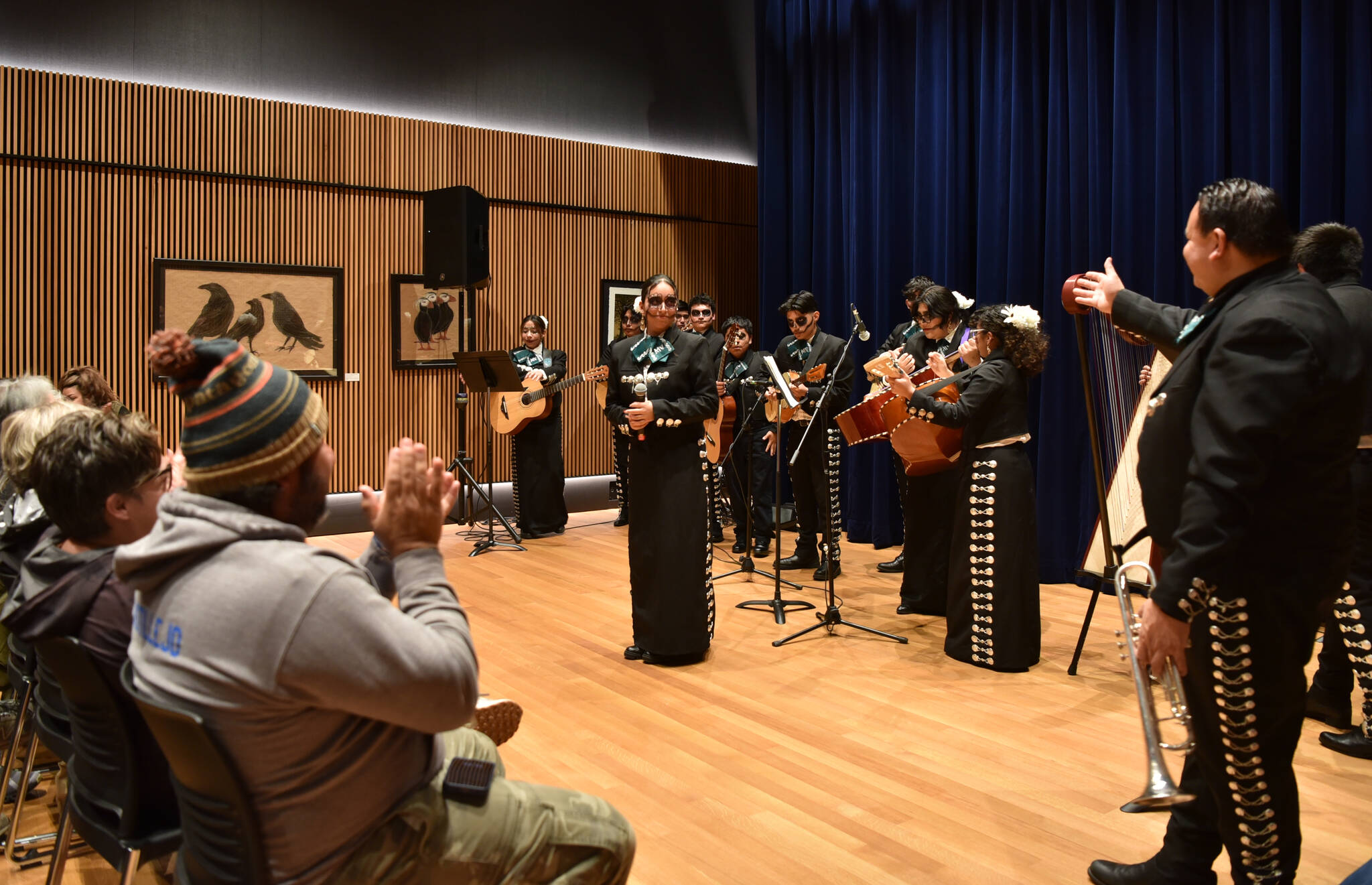The sounds of Mariachi music and dancing feet filled the Bainbridge Performing Arts Center Oct. 30 to celebrate Dia de los Muertos.
Providing the music was the Mount Vernon High School Mariachi & Folklorico group, the largest such program in Western Washington. Over 100 students participate in the Mexican art form known for vibrant costumes and stirring music. Music director Ramon Rivera teaches mariachi music and dances to preserve the tradition and share them with the greater community.
Dressed in black charro costumes and Dia de los Muertos (Day of the Dead) face makeup, the musicians played a repertoire of songs with guitar; guitarron; vihuela, a 19th-century, five-string, guitar-like instrument; trumpet; and harp.
Rivera discussed the clothing of the Folklorico dancers, who wore colorful dresses, tap shoes and Calaveras makeup. He also explained the charro suit that evolved during the 1940s when bullfighting was popular in Mexico. Bullfighters would have their theme song, and the mariachis started making suits to dress as nicely as the bullfighter, who wore a matador outfit.
Rivera introduced all the teen musicians and pointed out that two young women were breaking traditional roles by playing the deep bass guitar. “Back in the day, they said women couldn’t play the guitar because they would have trouble having babies. So, we’re changing that. That is the heart and the soul of mariachi music,” Rivera said.
He highlighted the importance of music education in schools, particularly for Latino students. He aims to break stereotypes by showcasing the talents of his students to let the community know about the positive aspects of their culture. Rivera teaches three folklorico classes, two mariachi classes, and a leadership class called “Latinos in action.”
“There’s so much that we’re doing in Mount Vernon, and that’s why our school district is funding our programs 100 percent because they see that every kid that takes music does better in school.”
He said the kids enjoy the classes. “Our kids need it right now, especially after COVID. They need to find joy in school and you saw that when those girls were dancing and singing. That’s why I wanted to bring it to Bainbridge Island because both communities win,” Rivera said.
Some students said they enjoyed participating in mariachi because it has brought them closer together. Vivian Rosalez, a sophomore who started singing this year, said: “It’s nice knowing that people like the same thing I do. It’s like a family.”
Kristin Tollefson of Bainbridge Island Museum of Art said BI enjoys the performances. “Every year, people contact me after the community celebration about how it has allowed them to really think deeply about people who have passed or about their own place in the cycle of life.”
She added Americans can learn from such art forms. “I think that storytelling, and being able to tell a story or have a container for stories, is something that we’re really missing as an American contemporary culture, and this is helping people reconnect.”



